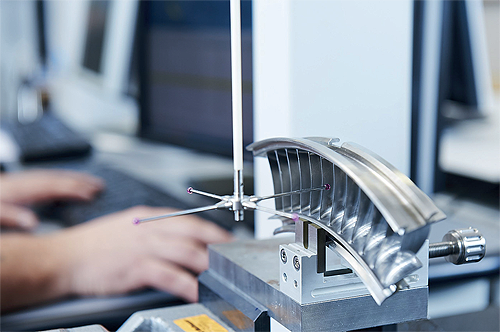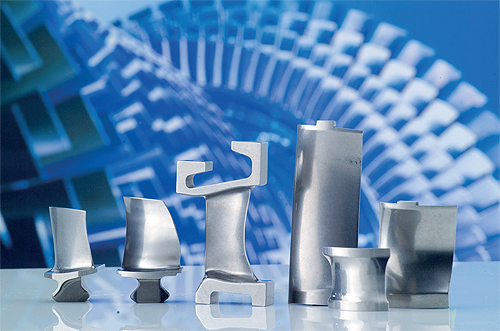Leistritz
Aero engine experts
Specializing in the manufacture of turbine technology, Leistritz is using innovation to overcome the challenges of 2020
Having been in business for over 100 years, Leistritz has had time to compile a deep product portfolio supported by generations of manufacturing experience. Back in 1905, the company began life as a producer of steam turbine blades, before turning its hand to blades, vanes, disks, and airfoils for aero engines at the end of the Second World War.
Today, Leistritz is an organization of around 1700 employees operating across four divisions: Pump Technology, Extruder Technology, Production Technology, and Turbine Technology. These areas combine to serve a wide variety of industries, from the automotive to pharmaceutical sectors.
Turbine Technology, Leistritz’s oldest division, accounts for 800 staff members and contributes €100 million to the business each year. Valued and trusted by its clients, Leistritz’s turbine unit works with some of the world’s leading engine manufacturers, including Rolls-Royce and Pratt & Whitney, as well as Tier One suppliers like MTU, Kawasaki Heavy Industries, and ground-based turbine manufacturers such as Siemens. Speaking to Manufacturing Today, Leistritz’s Managing Director, Bernd Kretschmer, explains the secrets behind the company’s enviable client base.
“Sometimes people ask me why so many of these companies use Leistritz,” begins Bernd. “A lot of it is down to our ability to produce components that these businesses need in their engines but cannot manufacture themselves. Unlike work in our self-designing business units, the turbine and compressor blades we produce have been designed and specified by our clients. We operate as a technology and service provider in that sense and, thanks to our manufacturing capabilities, we offer clients the freedom to design solutions that they might previously have thought unfeasible. We have production technologies in place that allow us to use materials in a geometry that, by other common production methods, is very difficult and almost impossible to get.
“As a business, we have been in the market for more than 100 years now,” Bernd adds. “In order to stay in the market that long, you must have the capabilities to perform good work, you must be reliable in what you are doing, you must be competitive, and you must have something that sets you apart from the masses. If you can combine these elements, then you have a justification to stay successful.”
Equipped with the latest machinery and technologies, Leistritz’s network of production facilities help to set the business apart from its competitors. With two locations in Germany, one in Croatia, and another in Thailand, the company’s manufacturing sites house a huge collection of mechanical machining methods, including forging, milling, grinding, etching, and coating capabilities. These more traditional manufacturing techniques are combined with rare, cutting-edge processes, such as electrochemical machining, a touchless procedure that can create large volumes of airfoil quickly, cheaply, and with high repeatability.
“The electrochemical process is one of the highlights of our operation, for sure,” Bernd asserts. “There are two versions electrochemical machining (ECM) and pulsed electrochemical machining (PECM). As a principle, the chemical process is the same, but the pulsed version involves switching the electric currency on and off during the procedure. The equipment we use for that is developed and built ourselves; you cannot buy it on the market. It’s a very special thing.
“In September 2020, we signed a contract with Pratt & Whitney worth more than €120 million for the manufacture of four different compressor vanes and this is due to the fact that they recognized we have the PECM process,” Bernd reveals. “The client needed much better quality than they could achieve in their own facilities and they were delighted by the parts we produced, going so far as to say they had ‘never seen such good compressor elements’. This is why we won the contract.”
Leistritz’s success with electrochemical machining is all part of the firm’s ongoing development as it strives for the most innovative ways of working. The result is that the company’s clients never have to compromise on their visions as Leistritz continues to find ways to make what was previously impossible, possible.
“Vanes on compressor systems used to consist of many individual blades, which were installed in the casings. Or alternatively, you would have individual airfoils that could be mounted by  bracing, or other methods, into segments,” Bernd says. “Nowadays, we have technologies in place that allow the manufacture of very precise vane segments out of one single piece of material. Similarly, on the disk side, in the past you had disks and blades separated, but nowadays you can produce it as an integrated part, which is a so-called ‘blisk’ – a blade and disk combination.
bracing, or other methods, into segments,” Bernd says. “Nowadays, we have technologies in place that allow the manufacture of very precise vane segments out of one single piece of material. Similarly, on the disk side, in the past you had disks and blades separated, but nowadays you can produce it as an integrated part, which is a so-called ‘blisk’ – a blade and disk combination.
“Some of our recent innovation has been focused around complex leading edge technology. If you look at the big fans on modern aero engines, the huge fan blades are no longer full metal components but fiber composites. Nevertheless, they have metal leading edges to make them more robust against foreign object damage and wear and tear. Historically, the manufacture of these metal leading edges has been very expensive and difficult, but now we are in the middle of development for a method that will allow us to manufacture the edges much more smartly and cheaply than is currently possible.”
Though the ground-breaking technologies on show at Leistritz have been instrumental in the company’s success, Bernd is eager to express that the firm would be nothing without its people. No matter how technologically advanced the business becomes, the Managing Director believes that the human side of operations will always be at the company’s heart. In Bernd’s words, ‘the machine itself does not create the success’.
“It’s like if you have a race car,” he explains. “The car alone does not make you the winner – you need to have the right drivers. This is something we really take care of and we have an excellent support team with an extremely high level of experience, which of course is needed to train the young engineers regularly joining our teams. If you start with a company like us that is working on high-end technologies, it’s something you can’t learn at university or through apprenticeships. These are special processes and the knowhow needs to be transferred from the existing staff to the new employees. For most of these employees, once they are with us, they stay with us. We have a very low fluctuation and turnover rate, so people are happy to work with Leistritz and we have dozens of staff members who celebrate 25 or even 40-year anniversaries with us.”
This strong foundation has been especially important throughout 2020 and the accompanying impact of Covid-19 on the airline industry. Since March this year, the market has seen a severe downturn, to the point where today, around 90 per cent of flights and passenger traffic has been cut over the last seven months. Consequently, aircraft manufacturers like Airbus and Boeing have reduced build rates by up to 60 per cent, and aero engine manufacturers have followed suit at a similar rate.
Thanks to the diversity of the company’s offering, and a spate of new business, Leistritz has not suffered to such an extent. Though the firm, understandably, is currently experiencing less demand than usual, Bernd is confident that the aero engine market will rebound.
“Based on our growth perspective, the technology developments we are pursuing, and the size of the company, we have the chance to win some workshares that, so far, have been covered by competitors,” Bernd reports. “We also do a lot of work for military applications, which didn’t experience a drop like the civil air engine business, so there is a great degree of stability there. It may take some years for the civil market to return to the levels of 2019, but we know it will recover. There is a demand globally. People like to travel.
“Despite the crisis, we have an aggressive growth plan and are developing technologies that allow our customers to choose us as their preferred source. We are also considering setting up new facilities, possibly in Thailand, where we already have a low-cost base, which would help us to produce in larger volumes and become even more competitive than we are today. When it comes to machinery, we are now working with handling robots that can go through the whole process, from measuring equipment to putting parts into the machines. Automation is an ongoing process and we need it in our organization for process capability and for cost reasons.
“Due to the nature of our work, we can’t grow our customer base any further because there are no engine manufacturers with whom we are not already doing business,” Bernd summarizes. “However, there is always room for growth and the technology never sleeps in our world. It is an ongoing development and we need to keep moving forward to stay competitive.”
Leistritz AG
Services: Manufacturer of turbine technology
www.leistritz.com
